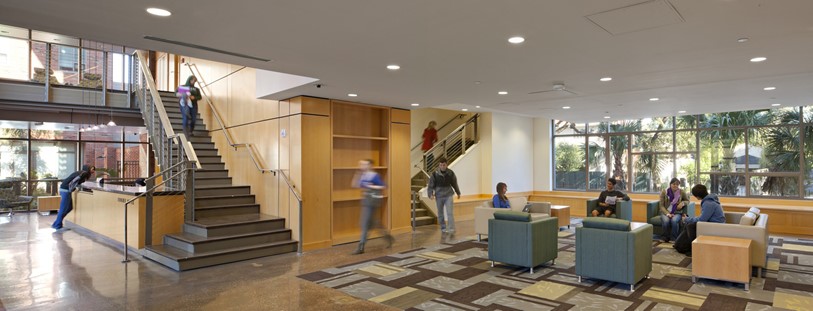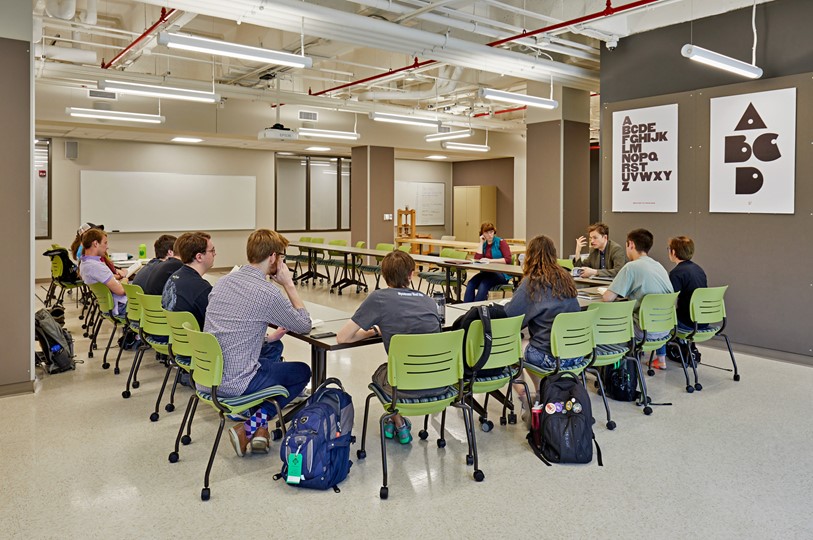Getting Students into Community
Colleges and universities spend millions of dollars building residence halls hoping to create a home away from home for students. They address the front door experience, indoor-outdoor connections, provide abundant study space, partner with academic programs to activate classrooms and maker spaces and focus on cultural identity, diversity and inclusion. But what really matters?
In May 2019, I wrote an article entitled, “What Matters Most to Students.” It is based on personal insights from projects I have worked on for our college and university clients. What I wrote at the time is accurate but only part of the story. So, in fall 2019, I decided to ask the experts on this topic and emailed my professional student life contacts seeking their input on three questions:
- What are your top 5 strategies for getting students out of their rooms and building an engaged community in residence halls?
- What programs or activities do you find most effective?
- Are there specific spaces that work better that others for building student communities?
The respondents represent a variety of institutional types and sizes, both public and private. They provided a wide range of insights and anecdotal stories. I worked with two of those experts, Ana Hernandez from the University of South Florida and Matthew Kerch from the University of Alabama to develop an online survey which was sent to a larger audience via student life professional organizations communication channels. Go big or go home, right?
The survey was open from mid-February to the end of March 2020 – just before the impacts of COVID began to be felt. Responses were recorded from approximately 200 individuals however, only 94 completed all aspects of the survey and advanced to the analysis phase. The responses reflect schools in the US, Canada, Mexico and the United Kingdom. Over half of the respondents were from large public institutions but there was good representation from all types and categories.

Across the board, their top five goals for student engagement and community building in residence, ranked in order of importance, are:
- A welcoming atmosphere
- Creating a sense of belonging & identity
- Developing social cohesion
- Instilling citizenship & civility
- A well-grounded learning cohort
I guess you will not be surprised to learn that 90 percent believe that building community in residence is important, but would you have known that a one-on-one relationship between the student and the residence advisor is overwhelmingly their #1 strategy – not a space or a program? Would you have guessed that study and learning spaces are more important than the front door experience? Would it surprise you to learn that having a large multipurpose lounge is more important than having a lounge on every floor? I would not have known any of this without asking these specific questions.
What else did we learn? The frequency of use of a public space is dependent on location in the building. For instance, it must be along the path of travel rather than a destination. Students want to pass by it every day, and they want to see what is happening. They do not necessarily want to walk through it, but along the perimeter to see who is there before they decide whether to participate. Glass storefront or even no walls at all is helpful for this. Natural light is important but ranks behind the right furniture in the right place, which also must be flexible so it can be configured in a variety of ways.

It will not be surprising for anyone that food is the most important factor in activating a space. But would you have known that the top three foods, in order, are pizza, ice cream and cookies? It seems that ice cream is popular because it is the one food students cannot keep in their rooms. That minifridge freezer just does not cut it. And, deli foods, veggies and even a hot buffet are not even close.
What about programs? Well, it’s essential they be regularly scheduled so students know what to expect and when to expect it. Planned social and educational events, interest-based and cultural events and intramural sports are the top performers. And staff participation is key. And did I mention, food? You have to have food to make it all work.
I would say that nothing we learned is news to anyone, if one thinks about it honestly, but the most important takeaway for me is the deemphasis on the buildings themselves except for the absolute necessity of the large multipurpose room that one passes by everyday with a close second being the right furniture in the right place – this being my next research topic!
The news flash here is about the essential nature of relationships with student staff and the delivery of relevant programs that bring students together. And food. Did I mention that?
I have presented this information at a couple of virtual events and would be happy to do so again. If you are interested, contact me at bhall@hewv.com.
